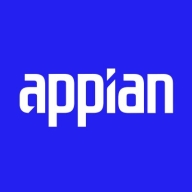

Appian and SAP Signavio Process Manager are powerful solutions in the business process management sector. Appian appears to have an upper hand in pricing flexibility, while SAP Signavio is perceived as more competitive among high-end solutions.
Features: Appian offers a rapid low-code development environment, enabling quick app deployment. Its SAIL technology allows for seamless UI creation, and BPMN 2.0 compliance enhances process modeling. SAP Signavio excels in process modeling, offering simplicity for non-technical users. Its Collaboration Hub supports team productivity and transparency.
Room for Improvement: Appian needs better UI customization for mobile apps, improved error reporting, and enhanced DevOps support. SAP Signavio faces requests for better user-friendliness, integration with document management systems, and improved analytics and workflow automation.
Ease of Deployment and Customer Service: Appian is praised for its scalable cloud solutions and excellent customer service. SAP Signavio provides robust deployment options but receives mixed reviews on service responsiveness, viewed as average compared to Appian.
Pricing and ROI: Appian's cloud-based pricing is often viewed as flexible and affordable, though its pricing can be higher than other low-code platforms. SAP Signavio offers good value for large deployments, despite perceptions of high entry prices and updated pricing concerns under SAP.
Appian is very efficient, allowing us to build a lot of applications within a financial year, making it cost-effective.
Their customer service is responsive, and the team is very prompt for support.
The technical support is generally good.
Appian has a community where I can put my questions.
Appian is scalable, but it depends on how you build your applications.
Initially, without much coding, I can easily handle five thousand records.
It depends on how it has been designed and how it has been configured.
I would like to see more enhancement in the user interface to allow more freedom in designing the sites and pages.
If there is a very complex process that includes a lot of data transitioning and memory-centric processes, it consumes a lot of memory.
On the pricier side, both Appian and Pega are enterprise-level solutions, placing them on the slightly higher side.
The pricing of Appian is based on the number of users and generally ranges from 70 to 100 USD per user per month.
The zero-code integration feature is remarkable, allowing for ease of data transfer and workflow enhancement.
It is easy for me to define the process and create configurable workflows.
I can create tables, perform database-related activities, and create multiple tables.


Appian is a unified low-code platform and solution used by businesses to build enterprise applications and workflows. This product adapts to the needs of clients and the technologies they are already using to combine their data in a single workflow and maximize resources. The platform has four main components through which it transforms the work process for companies of various sizes. They are:
Appian is utilized across a diverse set of industries, including automotive and manufacturing, energy and utilities, education, financial services, telecom and media, transportation, retail, insurance, healthcare, and life sciences. The most frequent use cases of Appian are customer journey, governance, risk and compliance, operational efficiency, supply chain, distributed order management, and environmental, social, and governance (ESG) management.
Appian Features
Appian has various features that allow users to create solutions for their businesses. These features can be separated into a few groups according to function, including automation, low-code application development, and integrations and data. Some of the most frequently used features of Appian include:
Appian Benefits
The benefits of using Appian include:
Reviews from Real Users
A practice leader - digital process automation at a computer software company values Appian highly because the product is easy to develop, low-code, and has a good user interface.
Alan G., an advisory board member at Codecon VR, Appian offers a clear application life cycle, easy to learn documentation, and comes with a fundamentals course.
The Signavio portfolio of web-based business transformation solutions helps companies to understand and optimize all of their business processes quickly and at scale, providing instant insights for informed decision-making. Signavio’s intuitive analysis, change management and execution solutions around process excellence include use cases like digital transformation, operational excellence and customer-centricity, placing them at the heart of global organizations.
Over 1 million users in more than 1,500 organizations worldwide rely on Signavio products to make processes part of their company’s DNA. Headquartered in Berlin, Germany, Signavio was founded in 2009 to address the need for a collaborative approach to process management.
Signavio was acquired by SAP in the first quarter of 2021. For more information, visit www.signavio.com
We monitor all Business Process Management (BPM) reviews to prevent fraudulent reviews and keep review quality high. We do not post reviews by company employees or direct competitors. We validate each review for authenticity via cross-reference with LinkedIn, and personal follow-up with the reviewer when necessary.